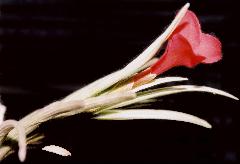
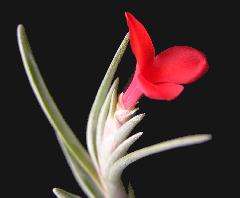
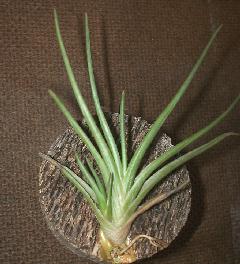
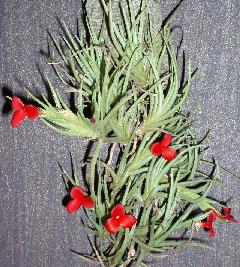
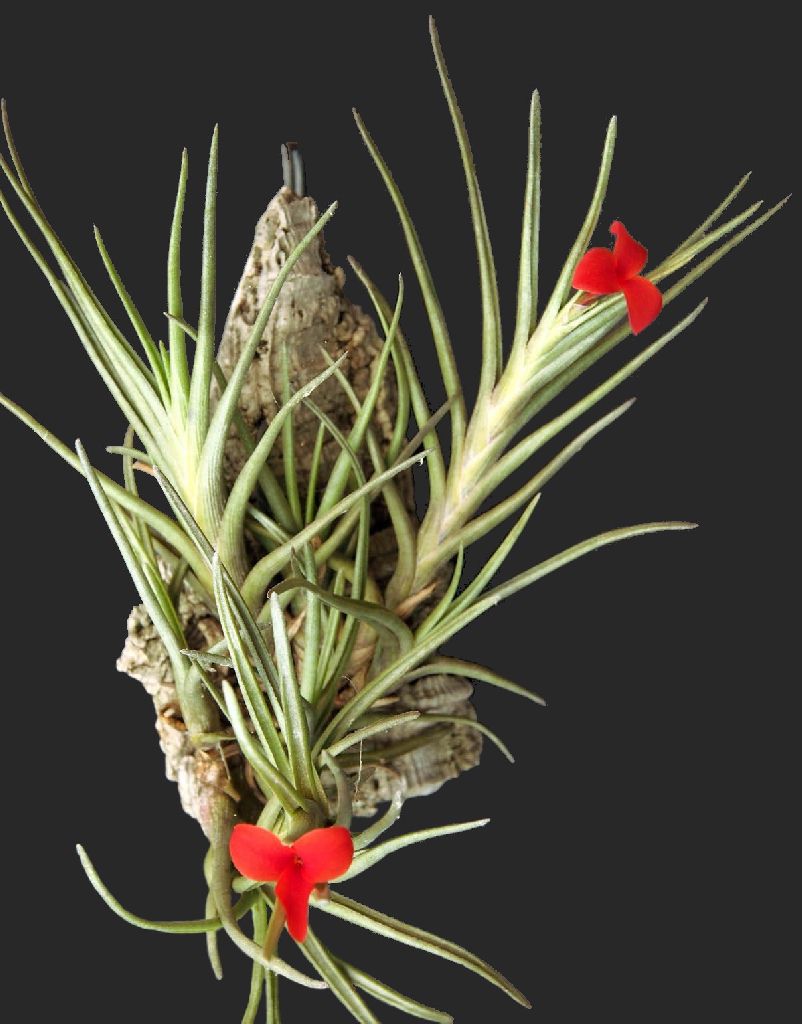

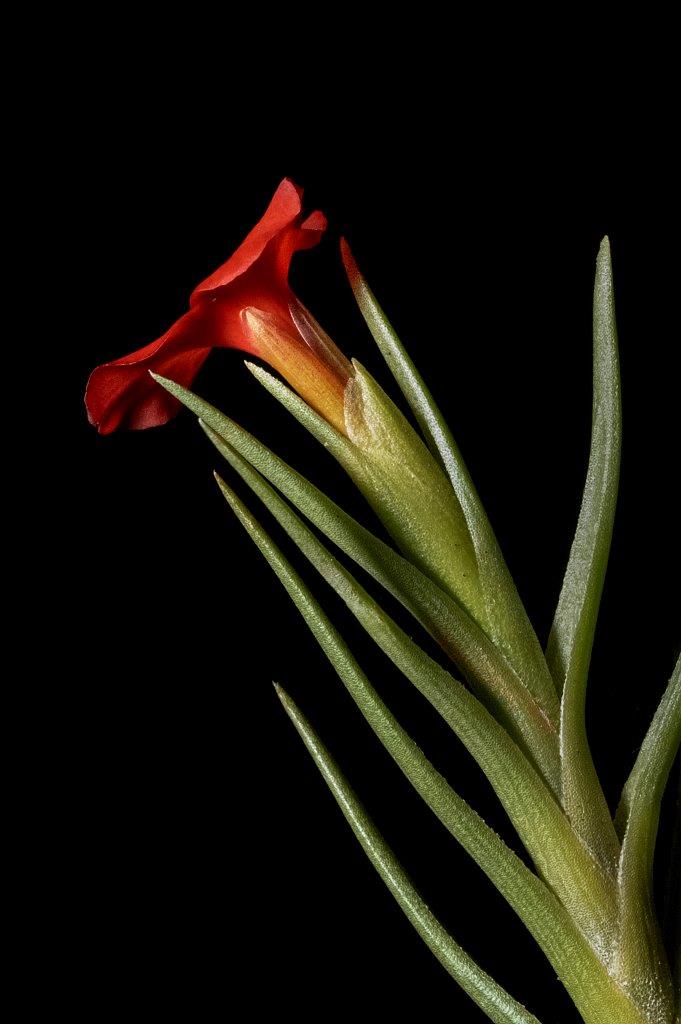
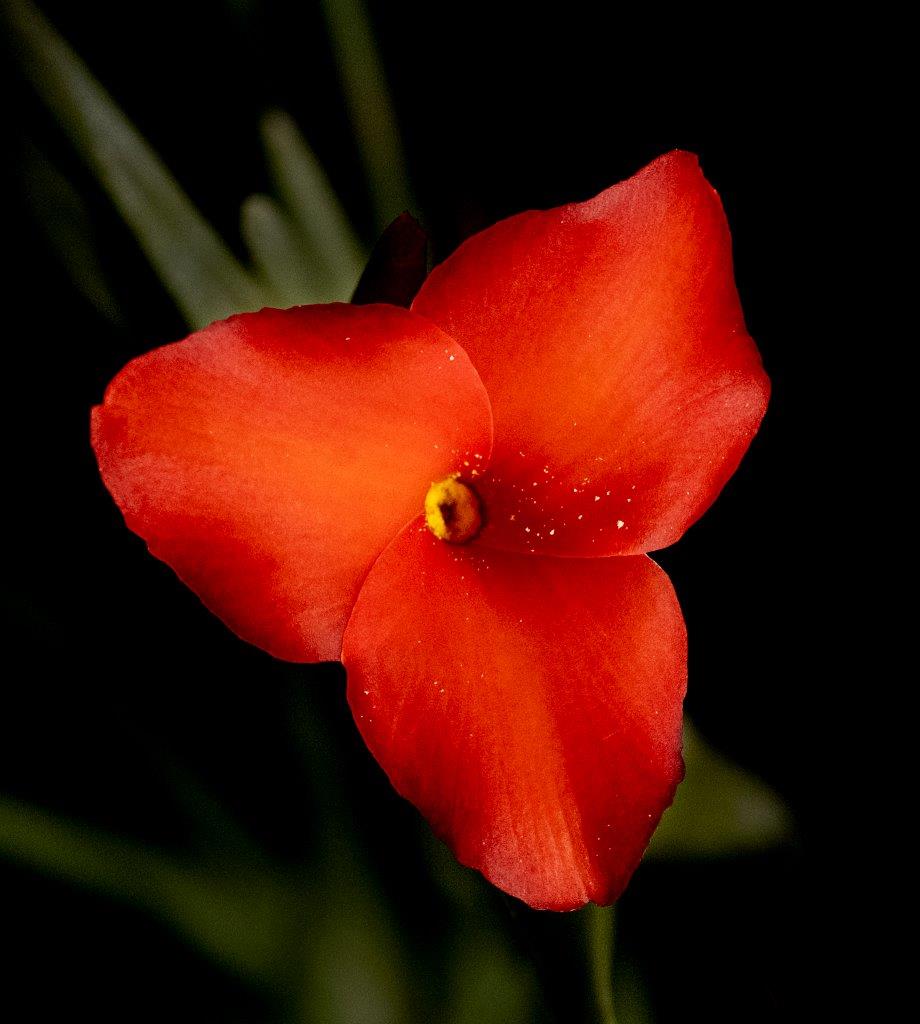
Protologue
(As told to Lyman B. Smith)
Recently construction of a new road has made accessible a section of the Rio Grande del Sauce that had not been explored. Here on its rocky banks, I found dense masses of a beautiful little tillandsia that was quite unlike anything in Dr. Castellanos' work in the "Genera et Species Plantarum Argentinarum." Also Lyman Smith has compared it with the herbarium material in the Smithsonian Institution and found nothing like it.
I am sending out living specimens of this tillandsia to encourage its cultivation and thus further commemorate Professor Alberto Castellanos, the teacher who greatly stimulated my interest in botany. Since his family name has already been used for another species of Tillandsia, I am dedicating this new species as follows:
TILLANDSIA ALBERTIANA Fr. Vervoorst, sp. nov. Bromel. Soc. Bull. 19: 121, 128, figs. 1969.
Ab omnibus speciebus Tillandsiae subgeneris Aerobiae foliis distichis, inflorescentiis sessilibus unifloris differt.
Plants caulescent, branched, forming compact masses or loosely pulvinate. Roots present. Stems 3 mm in diarneter. Leaves disitichous, to 12 cm long, except for the extreme base covered with appressed suborbicular cinereous scales; sheaths imbricate, elliptic, 20-25 mm long; blades divergent to spreading, sublinear with abruptly acute apices, 4 mm wide. Inflorcscence terminal, sessile, 1 flowered. Sepals lanceolate, acute, 17 mm long, green. Petals over 30 mm long, the blade elliptic, wine red. Stamens included, filaments much longer than the anthers. Capsule subcylindric, 2 cm long.
Type in the Instituto Miguel Lillo, isotypc in the U. S. National Herbarium, on rocky banks, near El Potrerillo (Ruta Nacional no.9, km 1418), Rio Grande del Sauce, Dep. Candelaria, Prov, Salta, Argentina, 6 July 1968, by F. Vervoorst (No. 7255).- Instituto Mignuel Lillo, Tucuman, Argentina.